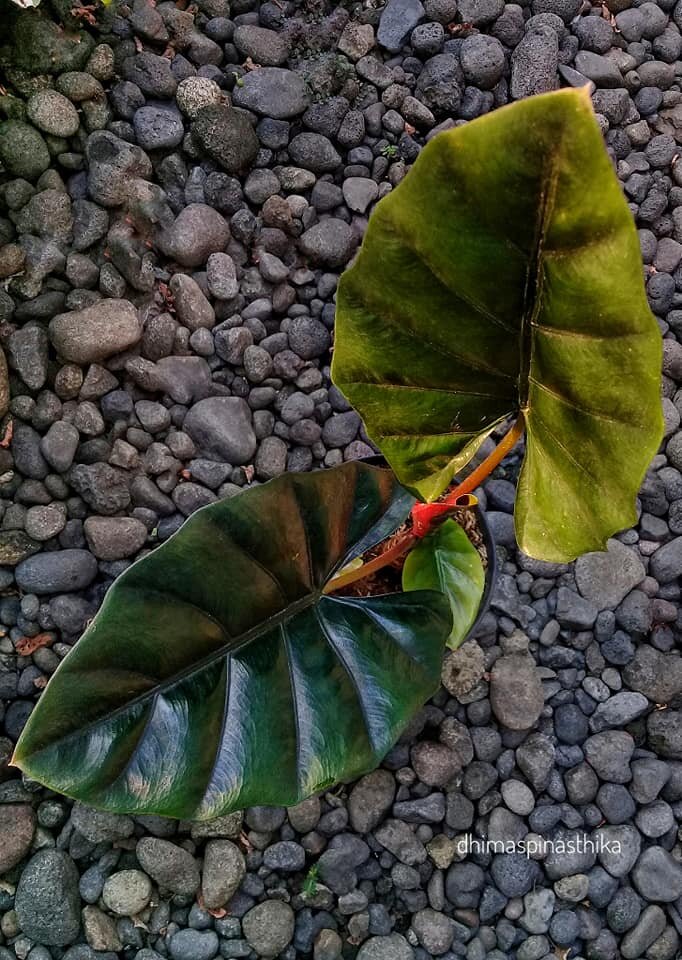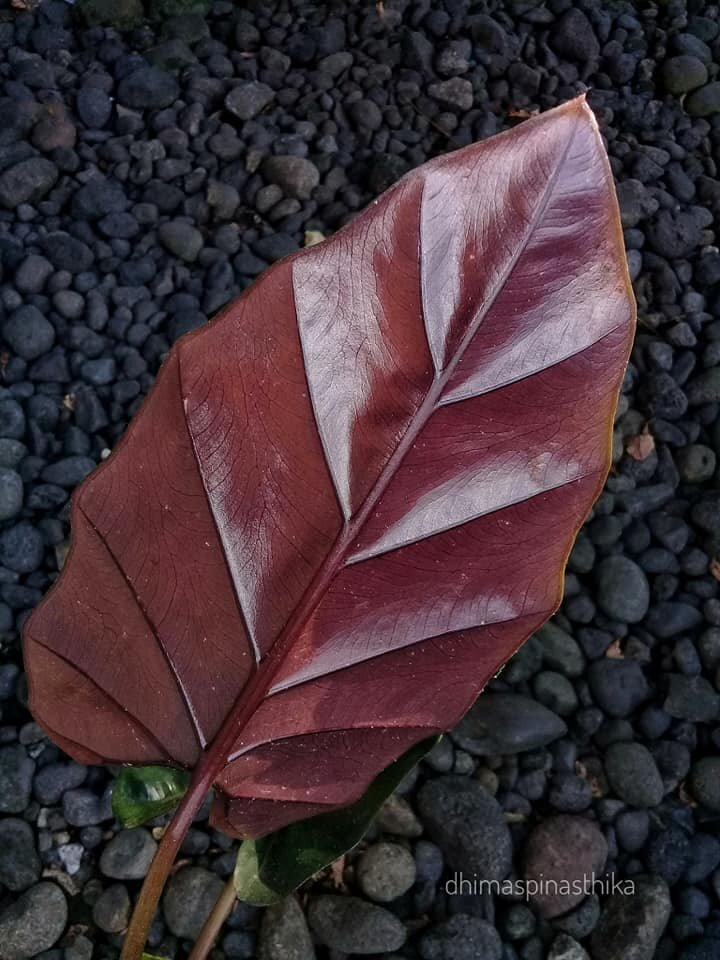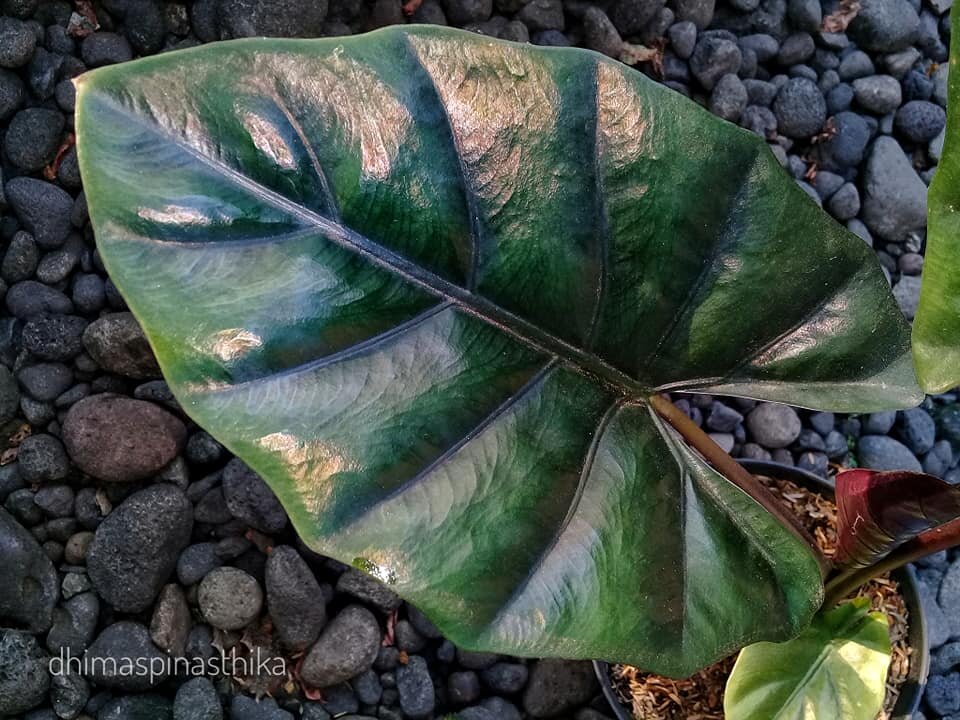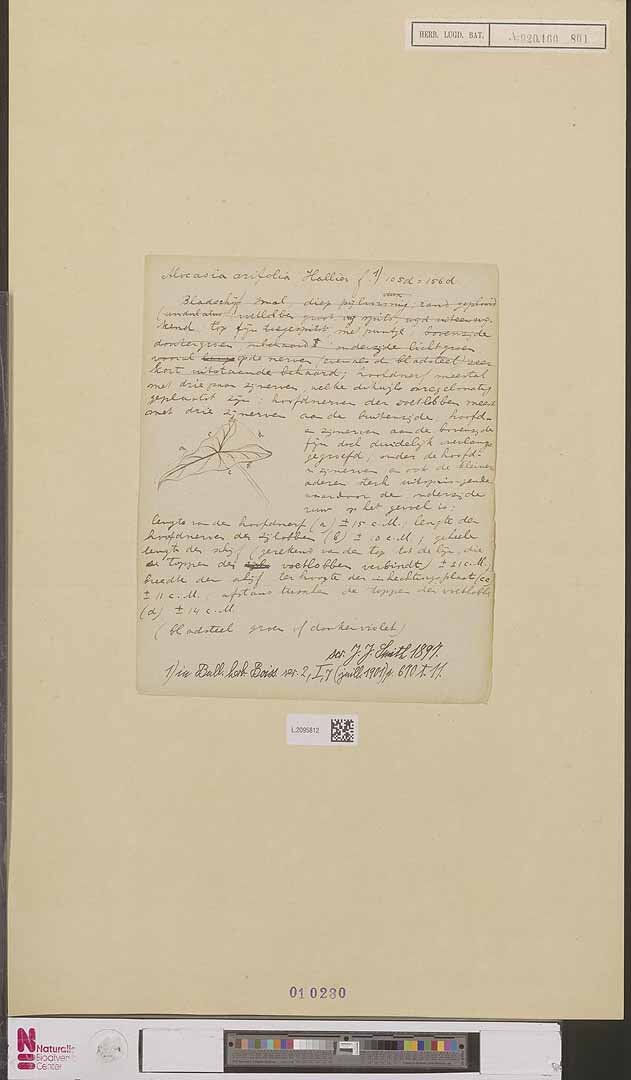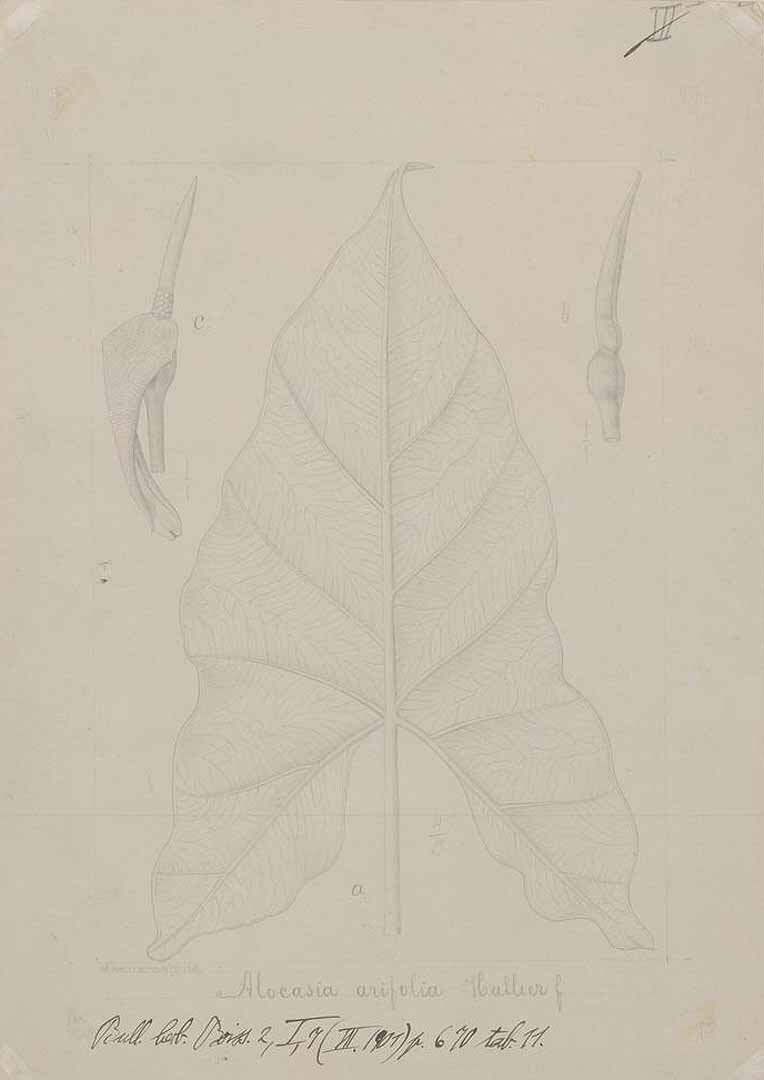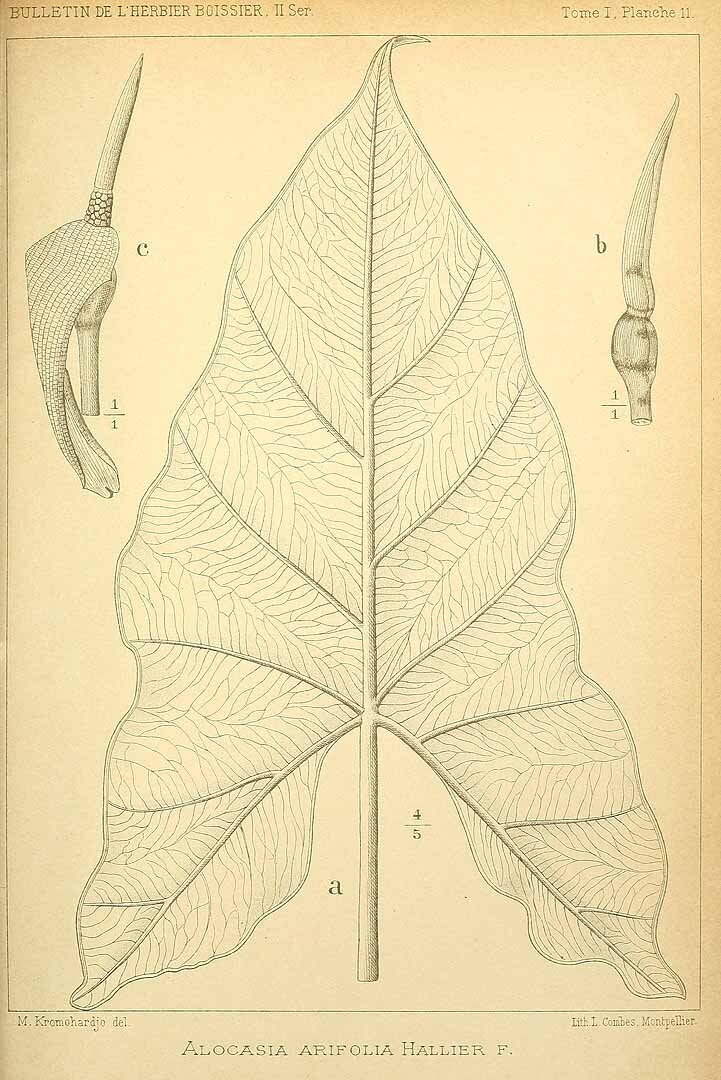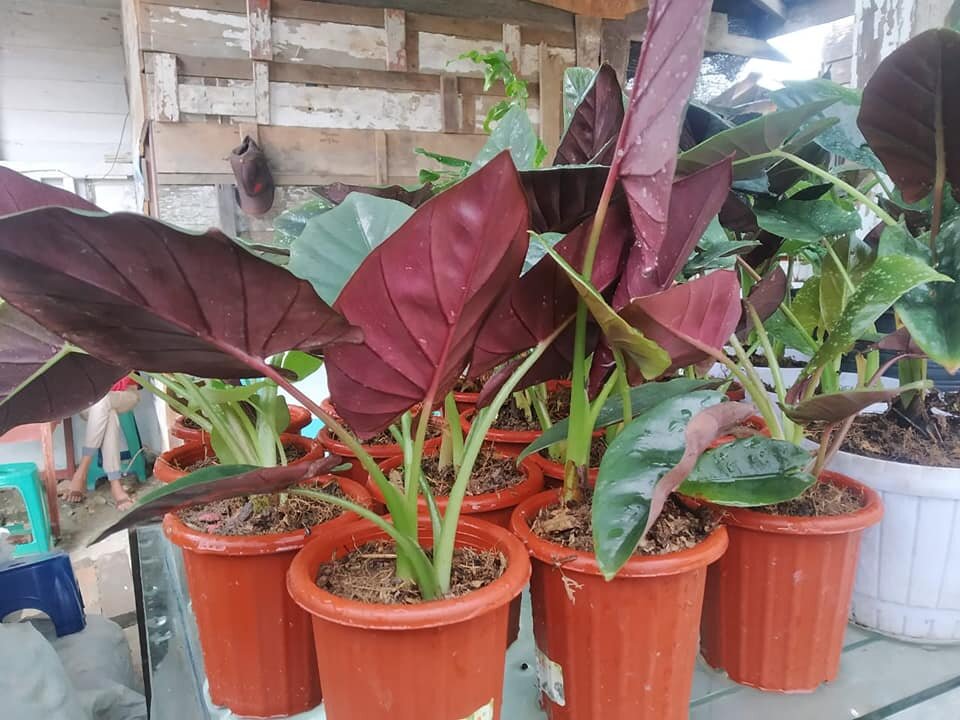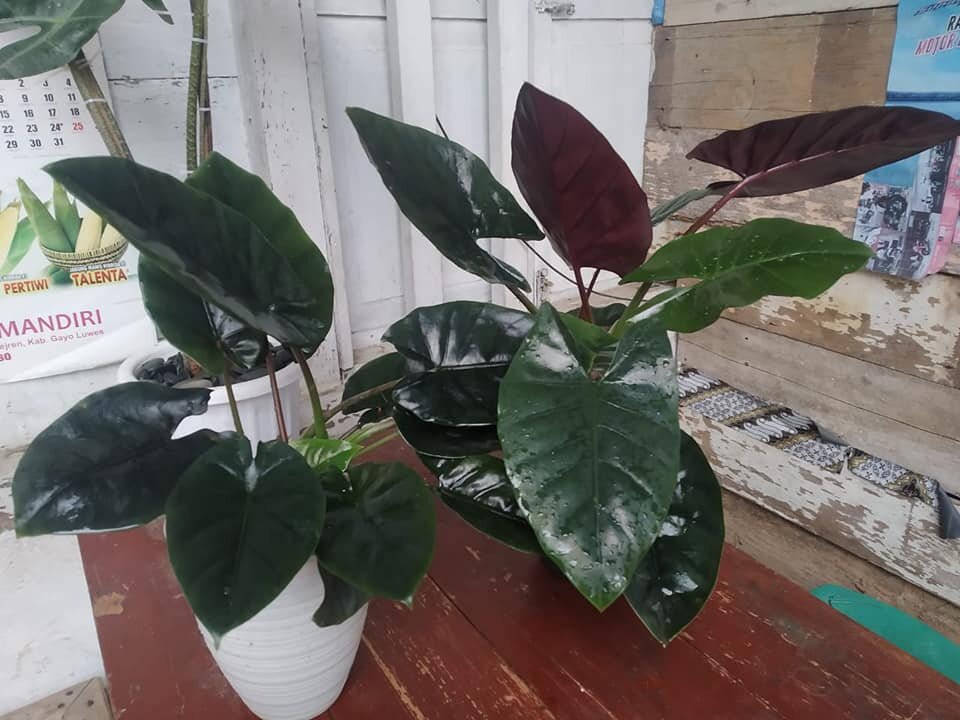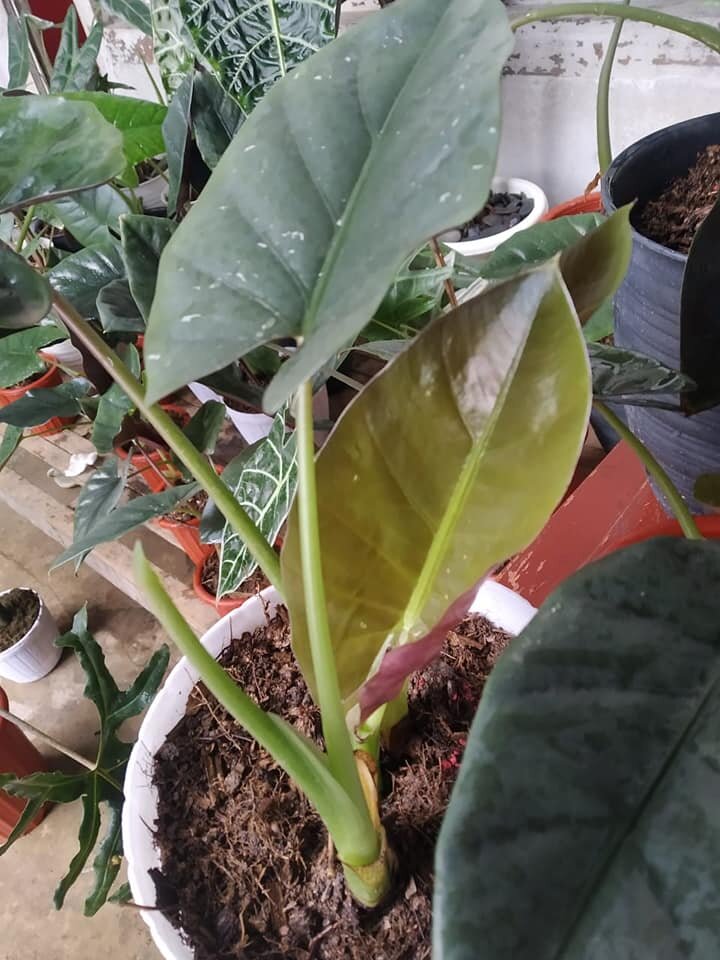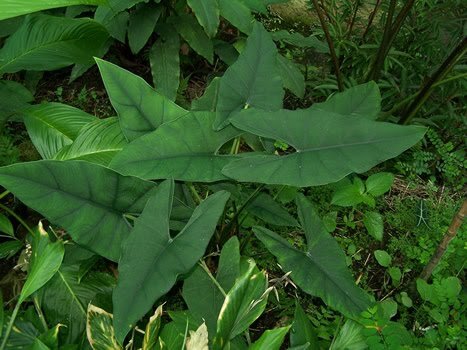ALOCASIA ARIFOLIA
ORIGINAL DESCRIPTION:
Alocasia arifolia was described by Hans Hallier in 1900, while he was working at the Botanical Museum in Hamburg, based on plant material sent to him by J.J. Smith
Johannes (Hans) Gottfried Hallier (6 July 1868 – 10 March 1932) was a German botanist. From 1893 until 1897, he was based at the Buitenzorg Botanical Garden in Java. He is credited for introducing a phylogenetic classification of flowering plants that became known as the "Hallier system". He published several works on the botany of the Dutch East Indies (now Indonesia), including treatises on the flora of Borneo.
Johannes Jacobus Smith (Antwerp 29 June 1867 – Oegstgeest 14 January 1947) (sometimes written as Joannes Jacobus Smith) was a Dutch botanist who, between years 1905 to 1924, crossed the islands of the Dutch East Indies (mainly Java), collecting specimens of plants and describing and cataloguing the flora of these islands. The standard botanical author abbreviation J.J.Sm. is applied to plants described by J.J. Smith.
Bulletin de l'Herbier Boissier (Switzerland) ser.2 v.1 (1900-1901) Page 670
Photo by Dhimas Pinasthika
SYNONYMS: N/A
DISTRIBUTION: Indonesia | Sumatra (recorded from few scattered localities)
CLIMATE: Hot Humid Tropical (Af climate)
Humidity is moderately high throughout the year, ranging from 70% to 90%
Temperature is relatively uniform throughout the year - within the range of 73°F/23°C to 90°F/32°C during the day. Minimum temperatures never dip below 65°F/18°C
High rainfall during monsoon months (Dec-Mar) and relatively little rainfall during the dry season (Jun - Sep)
ECOLOGY: Low montane forest 400-1300m alt., often near streams, but not rheophytic.
SPECIES DESCRIPTION:
Herb to 70 cm tall; stem erect to decumbent, to ca. 30 cm long, 2-4 cm diam.; leaves several together; petiole ca. 20-50 cm long, finely but densely puberulent to finely scabrid to glabrous, sheathing in the lower ca. V4-1/3, mid-green to purphsh brown; blade sagittate to hasto-sagittate, somewhat glossy mid/dark green adaxially, paler below, membranous to thinly coriaceous, to ca. 30 cm long; anterior lobe to ca. 22 cm long, widest at base, to 16 cm wide; anterior costa with 3-5 (-6) primary lateral veins on each side, diverging at ca. 45-60°, with inconspicuous axillary glands, sometimes abaxially puberulent; secondary venation flush with lamina when fresh, somewhat prominent abaxially when dry, fine but abaxially conspicuous, forming undulating to zig-zag interprimary collective veins and running to a rather conspicuous submarginal vein ca. 1.5-2 mm from the margin; posterior lobes acute, to ca. 15 cm long; posterior costae diverging at obtuse to very obtuse angles, naked in the sinus for up to 3 cm
INFLORESCENCE:
Inflorescences paired, the pairs interspersed with foliage leaves; peduncle to ca. 6 cm; spathe 5.5-9 cm long; lower spathe 1-1.5 cm long, separated from the hmb by an abrupt constriction, ovoid; limb oblong to oblong lanceolate, apiculate for up to 1 cm, greenish white, sometimes suffused purple-brown, erect, then reflexed; spadix subequalling the spathe, 4.5-8 cm long, shortly stipitate; stipe white, ca. 3 mm long; female zone ca. 8 mm long; ovaries subglobose, green, ca. 1.5 mm diam.; style very short, ca. 0.5 mm long; stigma white, 3-4-lobed, the lobes rounded; sterile interstice ivory, hour-glass shaped, corresponding with spathe constriction, ca. 7 mm long, ca. 3 whorls of rhombo-hexagonal synandrodia; male zone short, about equalling female zone, ca. 6 mm diam.; synandria ivory, rhombohexagonal, 2-3 mm diam.; thecae opening by apical pores overtopped by synconnective; appendix somewhat constricted at base, the rest shghtly narrower than male zone, finally tapering to a point, pale apricot; fruiting peduncle to ca. 20 cm long; fruiting spathe ovoid, ca. 2.5 cm long.
VARIEGATED FORMS: N/A
NOTES:
1. The two sheets that comprise the type, as interpreted here, consist of a leaf and an inflorescence respectively. However, it is not entirely clear that they represent the same collection (the second is undated and has no collection number), though they are both collected from the Bogor Botanic Garden. I (Hay) am in no doubt that they are of the same species and they are both determined as A. arifolia by Hallier. It would be desirable to designate an unambiguous epitype, but, as yet, complete, authentically provenanced material is not available.
2. Relationships of Alocasia arifolia are not readily apparent, but the arrangement of inflorescences and the synandria with the synconnective overtopping the thecae suggest alliance to Javan A. flemingiana.
Other specimens seen: SUMATERA: Cult. RBG Sydney Acc. No. 942737 ex cult. Hort.Leiden Acc. No. 940819 ex Sumatera, Vogel s.n. (NSW); Cult. RBG Sydney Acc. No. 970498 ex West Sumatera, G. Gadut, Hay et at. 13069 (NSW); Mentawi Islands, Siberut Island, Iboet 26 (BO); Lampung Prov., Mt Tanggamus, Jacobs 8265 (L); Aceh, Gajolanden, Bivak Aer Poetih waterfall, nr Pendeng, van Steenis 9283 (BO);
CULTIVARS: N/A
HYBRIDS: N/A

